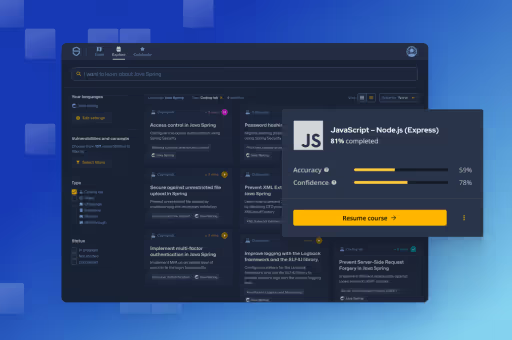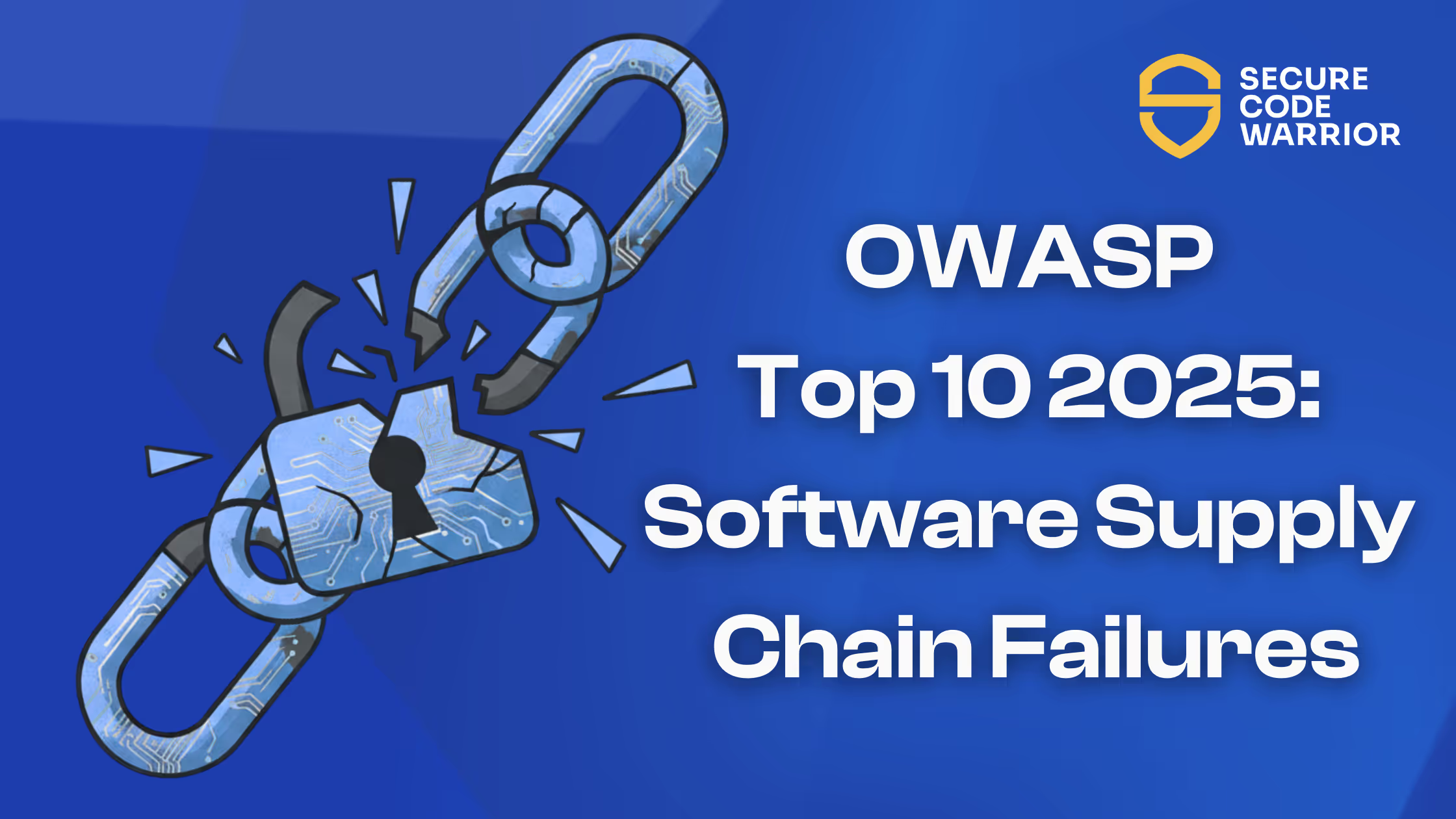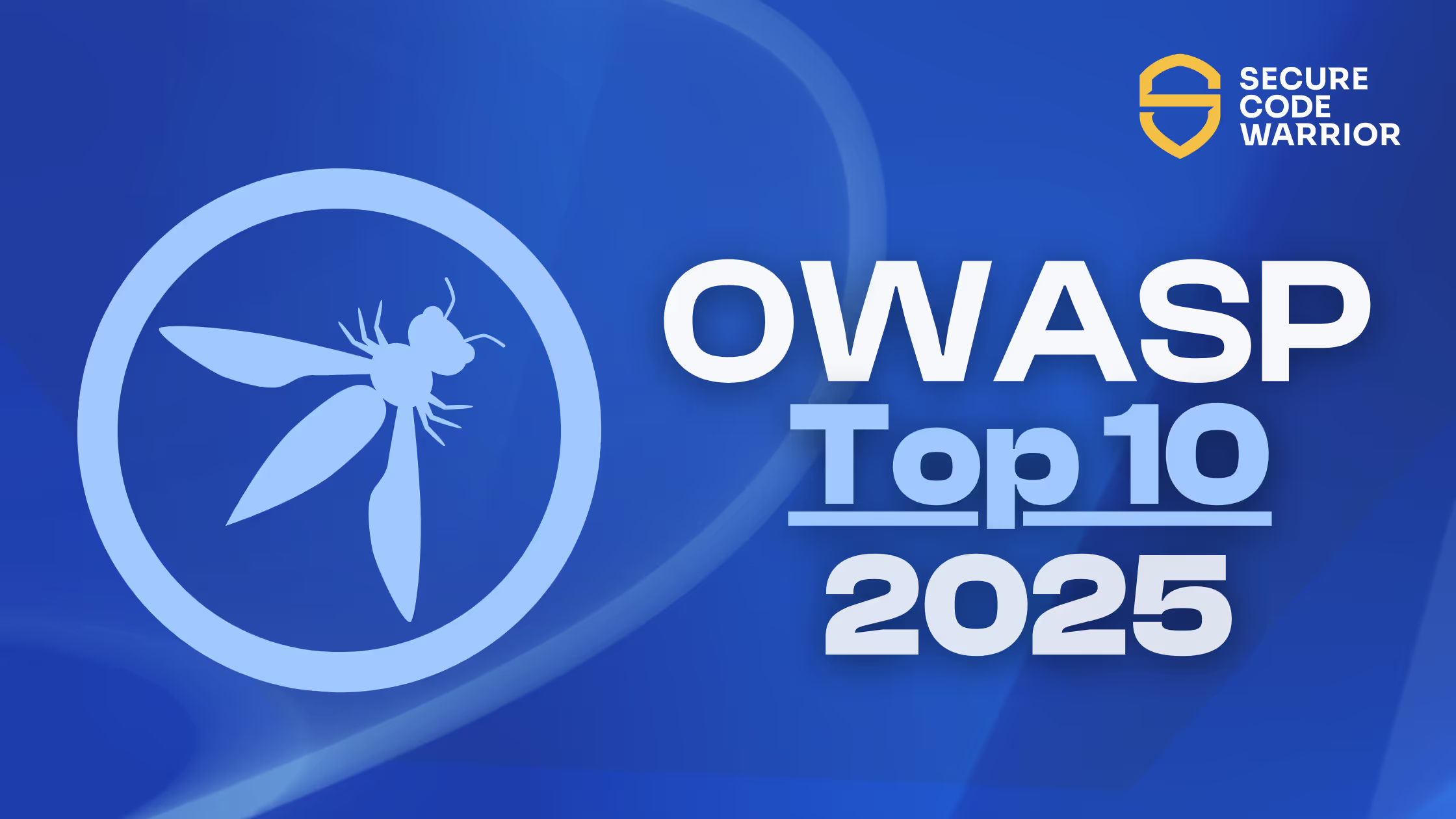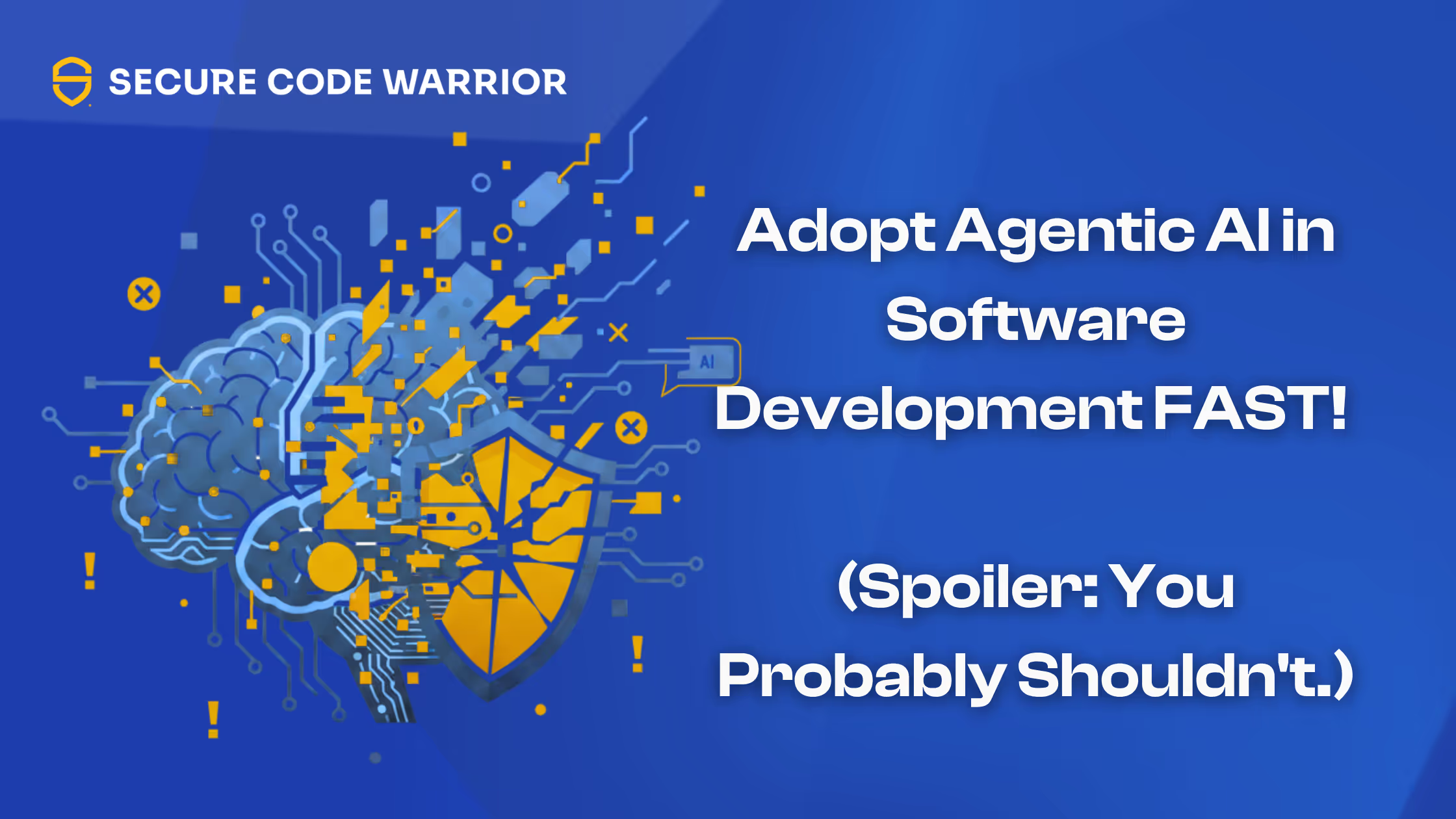
Why secure code training doesn’t stack up (and what you can do about it)
Boring, boring, boring! That’s one of the main responses you’ll hear from developers whenever secure code training is mentioned. At Secure Code Warrior we believe there must be a better way, so we engaged with Evans Data Corp. to conduct primary research into developers’ attitudes towards secure coding, secure code practices, and security operations (download your copy of the whitepaper here).
In the soon-to-be-released Shifting from reaction to prevention: The changing face of application security, developers were asked about their main problems with current secure code training – and the answer was revealing.
Training that brings developers down

40% of surveyed developers felt that secure coding is taught in a vacuum. Another 40% felt the training was too theoretical, not related to their work, and not ‘hands-on’ enough. 30% identified a lack of training in the language:framework they work in every day. This is serious because it tells us that current secure code training is contextually irrelevant and has no meaningful relationship with what developers do every day.
For many developers, their main challenge is staying awake during mind-numbing, hands-off activities that are neither effective nor inspiring them to keep security front-of-mind.
Training in a vacuum prevents developers from making the cognitive links between the laboratory and the real world.
3 things developers want from secure code training:
- Overwhelmingly, developers say they want training that is more hands-on and more contextually relevant to their everyday work.
- 65% of developers say more training is required in language-specific vulnerabilities and the OWASP Top 10.
- 75% of developers surveyed prefer structured, on-the-job training.
Training that lifts developers up
When it comes to on-the-job training, developers bring with them a certain level of experience and existing knowledge. This points to the need for 'scaffolded’ learning. This is training that is structured – or scaffolded – to build on what the developer already knows. Scaffolded education both activates and enhances any prior experience while continuing to build new skills in bite-sized chunks. This makes it the perfect means for on-the-job learning.
Imparting skills that stick
When it comes to developer security training, we know that developers prefer the learn-by-doing method to the drudgery of theory-based static learning. In that sense, learning to code securely in a hyper-relevant, contextual environment is key. As champions of change in secure coding, Secure Code Warrior delivers contextual, hands-on education in relevant programming languages and frameworks, with challenges that mimic those developers face in the real world. Learning content includes over 5,500 challenges and missions covering over 147 different vulnerability types, including the all-important OWASP Top 10, OWASP Mobile Top 10, OWASP API Security Top 10 and CWE/SANS Top 25.
If you’d like to see the potential impact on your teams and their ability to deliver secure code faster, book a demo now.

.avif)
Boring, boring, boring! That’s one of the main responses you’ll hear from developers whenever secure code training is mentioned. At Secure Code Warrior we believe there must be a better way.
Secure Code Warrior makes secure coding a positive and engaging experience for developers as they increase their skills. We guide each coder along their own preferred learning pathway, so that security-skilled developers become the everyday superheroes of our connected world.

Secure Code Warrior is here for your organization to help you secure code across the entire software development lifecycle and create a culture in which cybersecurity is top of mind. Whether you’re an AppSec Manager, Developer, CISO, or anyone involved in security, we can help your organization reduce risks associated with insecure code.
Book a demoSecure Code Warrior makes secure coding a positive and engaging experience for developers as they increase their skills. We guide each coder along their own preferred learning pathway, so that security-skilled developers become the everyday superheroes of our connected world.
This article was written by Secure Code Warrior's team of industry experts, committed to empowering developers with the knowledge and skills to build secure software from the start. Drawing on deep expertise in secure coding practices, industry trends, and real-world insights.

.avif)
Boring, boring, boring! That’s one of the main responses you’ll hear from developers whenever secure code training is mentioned. At Secure Code Warrior we believe there must be a better way, so we engaged with Evans Data Corp. to conduct primary research into developers’ attitudes towards secure coding, secure code practices, and security operations (download your copy of the whitepaper here).
In the soon-to-be-released Shifting from reaction to prevention: The changing face of application security, developers were asked about their main problems with current secure code training – and the answer was revealing.
Training that brings developers down

40% of surveyed developers felt that secure coding is taught in a vacuum. Another 40% felt the training was too theoretical, not related to their work, and not ‘hands-on’ enough. 30% identified a lack of training in the language:framework they work in every day. This is serious because it tells us that current secure code training is contextually irrelevant and has no meaningful relationship with what developers do every day.
For many developers, their main challenge is staying awake during mind-numbing, hands-off activities that are neither effective nor inspiring them to keep security front-of-mind.
Training in a vacuum prevents developers from making the cognitive links between the laboratory and the real world.
3 things developers want from secure code training:
- Overwhelmingly, developers say they want training that is more hands-on and more contextually relevant to their everyday work.
- 65% of developers say more training is required in language-specific vulnerabilities and the OWASP Top 10.
- 75% of developers surveyed prefer structured, on-the-job training.
Training that lifts developers up
When it comes to on-the-job training, developers bring with them a certain level of experience and existing knowledge. This points to the need for 'scaffolded’ learning. This is training that is structured – or scaffolded – to build on what the developer already knows. Scaffolded education both activates and enhances any prior experience while continuing to build new skills in bite-sized chunks. This makes it the perfect means for on-the-job learning.
Imparting skills that stick
When it comes to developer security training, we know that developers prefer the learn-by-doing method to the drudgery of theory-based static learning. In that sense, learning to code securely in a hyper-relevant, contextual environment is key. As champions of change in secure coding, Secure Code Warrior delivers contextual, hands-on education in relevant programming languages and frameworks, with challenges that mimic those developers face in the real world. Learning content includes over 5,500 challenges and missions covering over 147 different vulnerability types, including the all-important OWASP Top 10, OWASP Mobile Top 10, OWASP API Security Top 10 and CWE/SANS Top 25.
If you’d like to see the potential impact on your teams and their ability to deliver secure code faster, book a demo now.

Boring, boring, boring! That’s one of the main responses you’ll hear from developers whenever secure code training is mentioned. At Secure Code Warrior we believe there must be a better way, so we engaged with Evans Data Corp. to conduct primary research into developers’ attitudes towards secure coding, secure code practices, and security operations (download your copy of the whitepaper here).
In the soon-to-be-released Shifting from reaction to prevention: The changing face of application security, developers were asked about their main problems with current secure code training – and the answer was revealing.
Training that brings developers down

40% of surveyed developers felt that secure coding is taught in a vacuum. Another 40% felt the training was too theoretical, not related to their work, and not ‘hands-on’ enough. 30% identified a lack of training in the language:framework they work in every day. This is serious because it tells us that current secure code training is contextually irrelevant and has no meaningful relationship with what developers do every day.
For many developers, their main challenge is staying awake during mind-numbing, hands-off activities that are neither effective nor inspiring them to keep security front-of-mind.
Training in a vacuum prevents developers from making the cognitive links between the laboratory and the real world.
3 things developers want from secure code training:
- Overwhelmingly, developers say they want training that is more hands-on and more contextually relevant to their everyday work.
- 65% of developers say more training is required in language-specific vulnerabilities and the OWASP Top 10.
- 75% of developers surveyed prefer structured, on-the-job training.
Training that lifts developers up
When it comes to on-the-job training, developers bring with them a certain level of experience and existing knowledge. This points to the need for 'scaffolded’ learning. This is training that is structured – or scaffolded – to build on what the developer already knows. Scaffolded education both activates and enhances any prior experience while continuing to build new skills in bite-sized chunks. This makes it the perfect means for on-the-job learning.
Imparting skills that stick
When it comes to developer security training, we know that developers prefer the learn-by-doing method to the drudgery of theory-based static learning. In that sense, learning to code securely in a hyper-relevant, contextual environment is key. As champions of change in secure coding, Secure Code Warrior delivers contextual, hands-on education in relevant programming languages and frameworks, with challenges that mimic those developers face in the real world. Learning content includes over 5,500 challenges and missions covering over 147 different vulnerability types, including the all-important OWASP Top 10, OWASP Mobile Top 10, OWASP API Security Top 10 and CWE/SANS Top 25.
If you’d like to see the potential impact on your teams and their ability to deliver secure code faster, book a demo now.

Click on the link below and download the PDF of this resource.
Secure Code Warrior is here for your organization to help you secure code across the entire software development lifecycle and create a culture in which cybersecurity is top of mind. Whether you’re an AppSec Manager, Developer, CISO, or anyone involved in security, we can help your organization reduce risks associated with insecure code.
View reportBook a demoSecure Code Warrior makes secure coding a positive and engaging experience for developers as they increase their skills. We guide each coder along their own preferred learning pathway, so that security-skilled developers become the everyday superheroes of our connected world.
This article was written by Secure Code Warrior's team of industry experts, committed to empowering developers with the knowledge and skills to build secure software from the start. Drawing on deep expertise in secure coding practices, industry trends, and real-world insights.
Boring, boring, boring! That’s one of the main responses you’ll hear from developers whenever secure code training is mentioned. At Secure Code Warrior we believe there must be a better way, so we engaged with Evans Data Corp. to conduct primary research into developers’ attitudes towards secure coding, secure code practices, and security operations (download your copy of the whitepaper here).
In the soon-to-be-released Shifting from reaction to prevention: The changing face of application security, developers were asked about their main problems with current secure code training – and the answer was revealing.
Training that brings developers down

40% of surveyed developers felt that secure coding is taught in a vacuum. Another 40% felt the training was too theoretical, not related to their work, and not ‘hands-on’ enough. 30% identified a lack of training in the language:framework they work in every day. This is serious because it tells us that current secure code training is contextually irrelevant and has no meaningful relationship with what developers do every day.
For many developers, their main challenge is staying awake during mind-numbing, hands-off activities that are neither effective nor inspiring them to keep security front-of-mind.
Training in a vacuum prevents developers from making the cognitive links between the laboratory and the real world.
3 things developers want from secure code training:
- Overwhelmingly, developers say they want training that is more hands-on and more contextually relevant to their everyday work.
- 65% of developers say more training is required in language-specific vulnerabilities and the OWASP Top 10.
- 75% of developers surveyed prefer structured, on-the-job training.
Training that lifts developers up
When it comes to on-the-job training, developers bring with them a certain level of experience and existing knowledge. This points to the need for 'scaffolded’ learning. This is training that is structured – or scaffolded – to build on what the developer already knows. Scaffolded education both activates and enhances any prior experience while continuing to build new skills in bite-sized chunks. This makes it the perfect means for on-the-job learning.
Imparting skills that stick
When it comes to developer security training, we know that developers prefer the learn-by-doing method to the drudgery of theory-based static learning. In that sense, learning to code securely in a hyper-relevant, contextual environment is key. As champions of change in secure coding, Secure Code Warrior delivers contextual, hands-on education in relevant programming languages and frameworks, with challenges that mimic those developers face in the real world. Learning content includes over 5,500 challenges and missions covering over 147 different vulnerability types, including the all-important OWASP Top 10, OWASP Mobile Top 10, OWASP API Security Top 10 and CWE/SANS Top 25.
If you’d like to see the potential impact on your teams and their ability to deliver secure code faster, book a demo now.
Table of contents
Secure Code Warrior makes secure coding a positive and engaging experience for developers as they increase their skills. We guide each coder along their own preferred learning pathway, so that security-skilled developers become the everyday superheroes of our connected world.

Secure Code Warrior is here for your organization to help you secure code across the entire software development lifecycle and create a culture in which cybersecurity is top of mind. Whether you’re an AppSec Manager, Developer, CISO, or anyone involved in security, we can help your organization reduce risks associated with insecure code.
Book a demoDownloadResources to get you started
Kamer van Koophandel Sets the Standard for Developer-Driven Security at Scale
Kamer van Koophandel shares how it embedded secure coding into everyday development through role-based certifications, Trust Score benchmarking, and a culture of shared security ownership.
Threat Modeling with AI: Turning Every Developer into a Threat Modeler
Walk away better equipped to help developers combine threat modeling ideas and techniques with the AI tools they're already using to strengthen security, improve collaboration, and build more resilient software from the start.











%20(1).avif)
.avif)

.avif)



